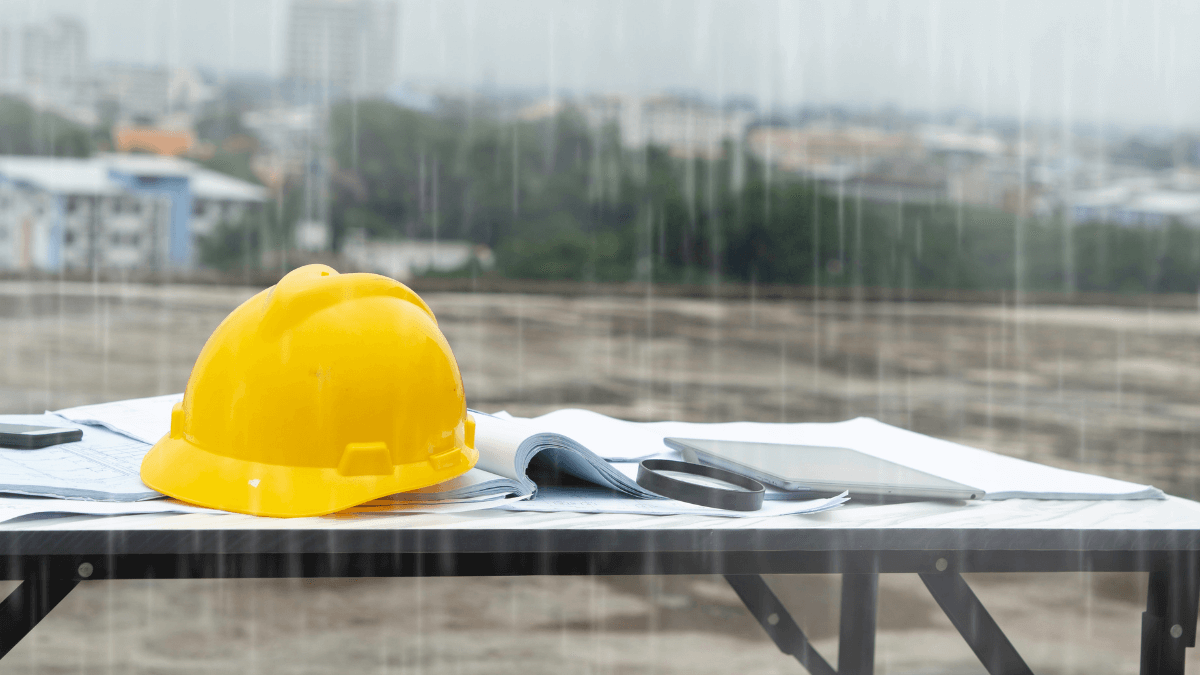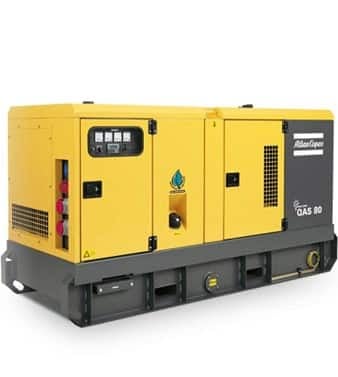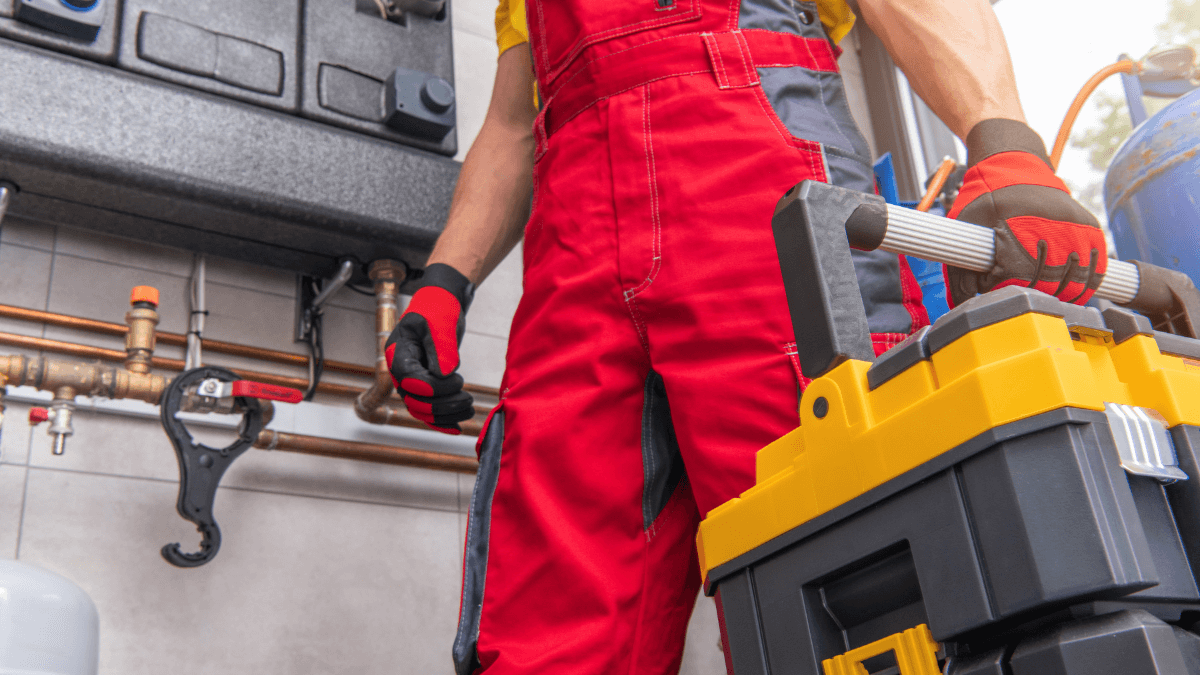Severe weather can negatively affect your construction site, putting your field workers in danger, damaging the construction they are working on, or delaying the entire project.
These consequences come at a price, so construction companies must plan for bad weather. If you’re in charge of construction projects or safety, you must devise a plan.
A severe weather emergency plan will keep your employees safe, the project on track, and money from being wasted.
Let’s learn how!
In this article...
The Impact of Severe Weather on Construction Sites
Severe weather can cause human and material damage, disrupting your construction projects.
Sadly, this type of weather can cause injury and death. Things can turn deadly if a worker happens to be in the wrong place during extreme weather.
A similar tragedy happened to six construction workers in Oman after a heavy flood trapped them in a water pipeline.
Winds can fling around tools and materials, resulting in a struck-by-object and fall injuries.
These two types of injuries are among the most common causes of death for construction workers, which means winds pose a big threat to your team.
Storms can also pose a significant danger to your team. Every year, about 300 people are killed by lightning, with construction workers accounting for over a fifth of the fatalities.
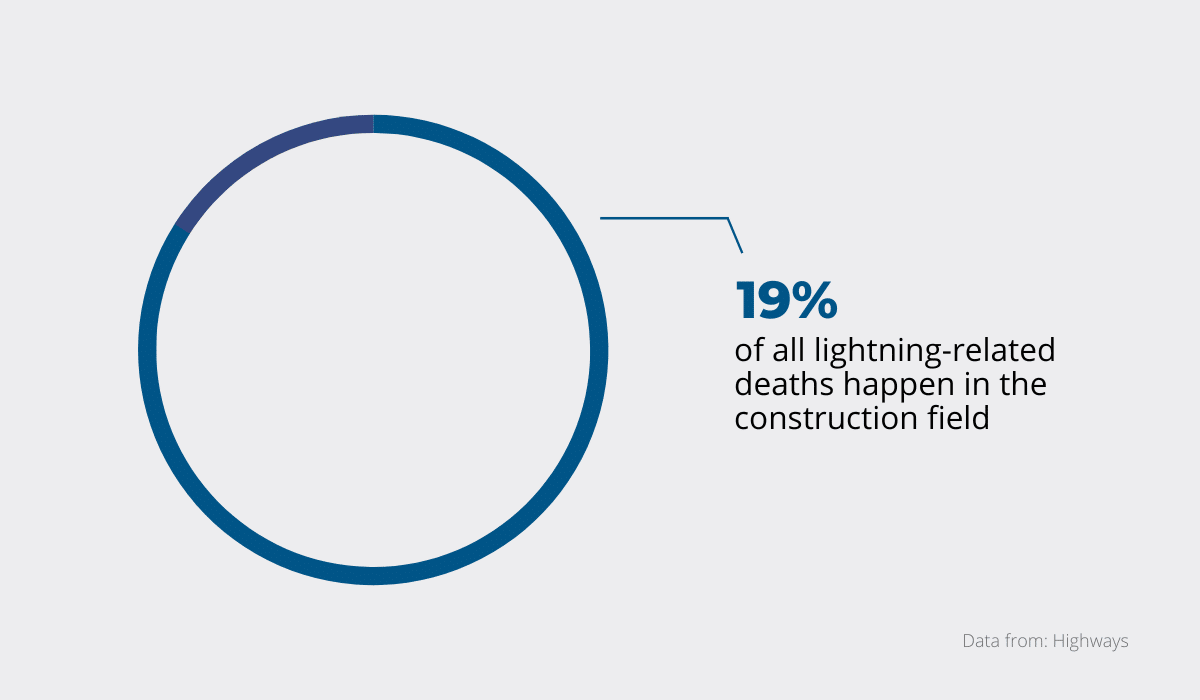
Lightning usually strikes metal and the tallest object around. Since construction sites are often both tall and full of metal, workers are at a higher risk.
Extreme temperatures can also cause injury and death. A study found that over 5 million people die due to hypo- or hyperthermia every year.
Disturbingly, experts predict the numbers will keep growing because of climate change.

Therefore, this type of severe weather risk will sadly become a reality for many companies. Stay prepared and invest in preventative and protective measures on your construction site.
Extreme weather frequently prevents you from working, resulting in project delays.
For example, if you rely on a lot of outdoor activities, snow can make it impossible for you to work outside for a while.
Therefore, your project will encounter setbacks that might not be excusable in predictable weather.
On top of being a health risk and delaying projects, extreme cold affects your productivity.
Decreased effectiveness happens with manual and equipment-related tasks since the cold slows people and equipment down, especially if accompanied by precipitation.
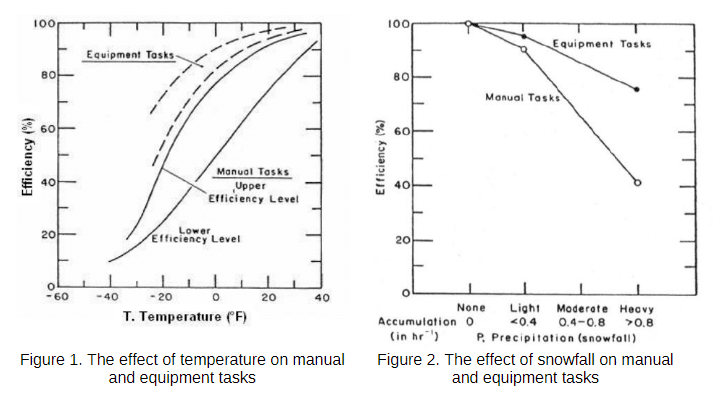
Furthermore, intense cold causes water to freeze. When water freezes, it solidifies into ice, which has a larger volume than the liquid.
This could cause the pipes to rupture, resulting in additional work and resources.
Because the consequences of severe weather are far-reaching and frequently costly, you should plan ahead of time.
To begin, you’ll need to know what types of extreme weather are likely to occur at your construction site. Let’s find out more!
Types of Severe Weather
Severe weather is a broad term that refers to a range of natural occurrences beyond our control. You can only be aware of them and prepare your construction site to minimize damage.
Understanding the many forms of severe weather events is the first step in this process.
Extreme temperatures are one of the most dangerous types of severe weather. If it gets too hot for the human body, your workers could suffer a heatstroke.
On the other hand, extremely low temperatures can lead to frostbite and hypothermia. All these conditions are safety threats.
Heavy rains are also a potential danger, as they can significantly reduce your staff’s visibility. Such rains can also lead to landslides and injure your workers.
During heavy storms, the massive amount of rainfall might clog your project’s drainage system and cause flooding.
Moreover, storms often come hand in hand with lightning, a significant threat to human safety in general, especially on construction sites with metal materials.
As mentioned earlier, lightning strikes the tallest object, so it’s important to seek shelter somewhere inside.
Another threat to construction sites when it comes to storms are the high winds accompanying them.
According to the Occupational Safety and Health Administration (OSHA), anything over 40 mph, or 30 mph in case of material handling, is a high wind.
When the wind gets too harsh, it can easily knock down workers, scaffolding, or objects that could fall on somebody.
Therefore, any work conducted at heights under such conditions becomes dangerous.
Winds include straight-line winds that blow in one direction, thunderstorms that produce intense winds, tornadoes, downbursts (powerful downdrafts), and hurricanes.
Each of these can be dangerous and deadly if you are not prepared.
In colder weather, snow and ice can disrupt your work on a construction site.
If you’re using materials that contain water and leave them out in low temperatures, they may change consistency.
Of course, many weather conditions are location-specific, so you must research and understand what kind of extreme weather is possible at your construction site.
Remember that the risks associated with the weather change from season to season, which we will look into in more detail now.
Seasonal Weather Risks Construction Businesses Face
Always know what weather to expect in the area while planning a project.
Extreme cold, winds, snow, and ice are potential winter hazards.
Working becomes more difficult due to the cold, so you’ll need to address that issue first and discover measures to keep workers as comfortable as possible.
Furthermore, winter conditions can damage your equipment.
The wind is present all year round but only becomes a problem at around 40 mph. Even walking is strenuous under heavy wind, let alone working at heights or using tools.
Cold weather can make wind even more dangerous.
When it’s freezing, winds lower the body temperature further. Since this is a big workplace hazard, OSHA published a suggested work/warm-up schedule for a four-hour winter shift.
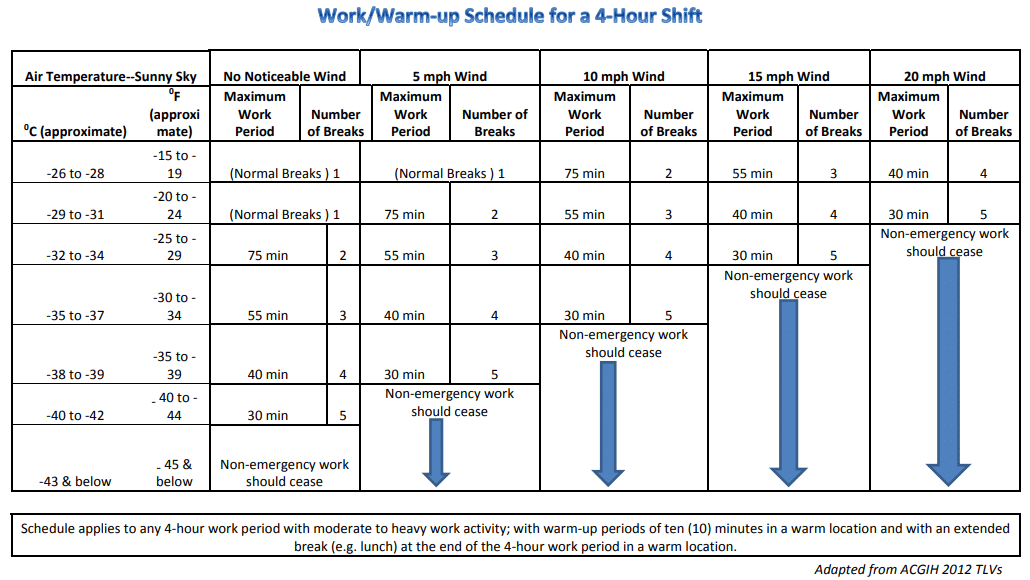
In some cases, when it’s cold and windy, OSHA recommends pausing non-emergency work activities.
In other cases, they suggest giving more breaks to workers so they can warm up and stay safe.
During the warmer summer months, you should be prepared for extremely high temperatures, tornadoes, hurricanes, and thunderstorms typical of warm periods.
Also, keep in mind that every 33.8-degree increase in temperature above 82 degrees reduces worker productivity by 57%, potentially causing project delays.
The summer months are also when most lightning-related deaths occur, which means you should expect and prepare for lightning when working during this period.
The Centers for Disease Control and Prevention (CDC) found that most deaths due to lightning happen in June and July.
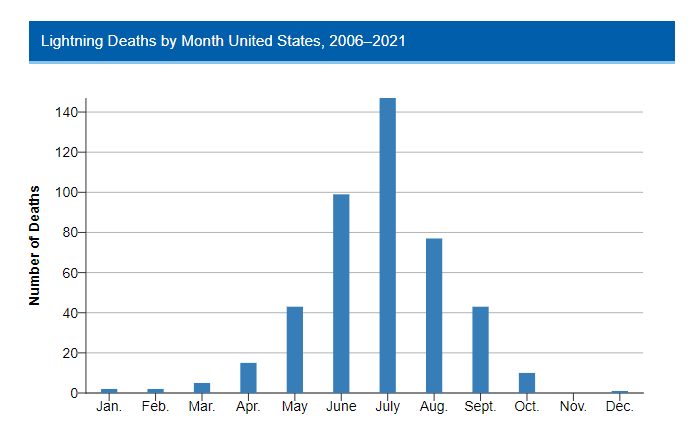
Over 140 lightning-related deaths happened in July, while almost none occurred in November and December.
Of course, since those are winter months, other types of severe weather threaten workers during that period.
The 2022 hurricane season, which typically lasts from June to December, will be abnormal, warns the National Oceanic and Atmospheric Administration (NOAA).
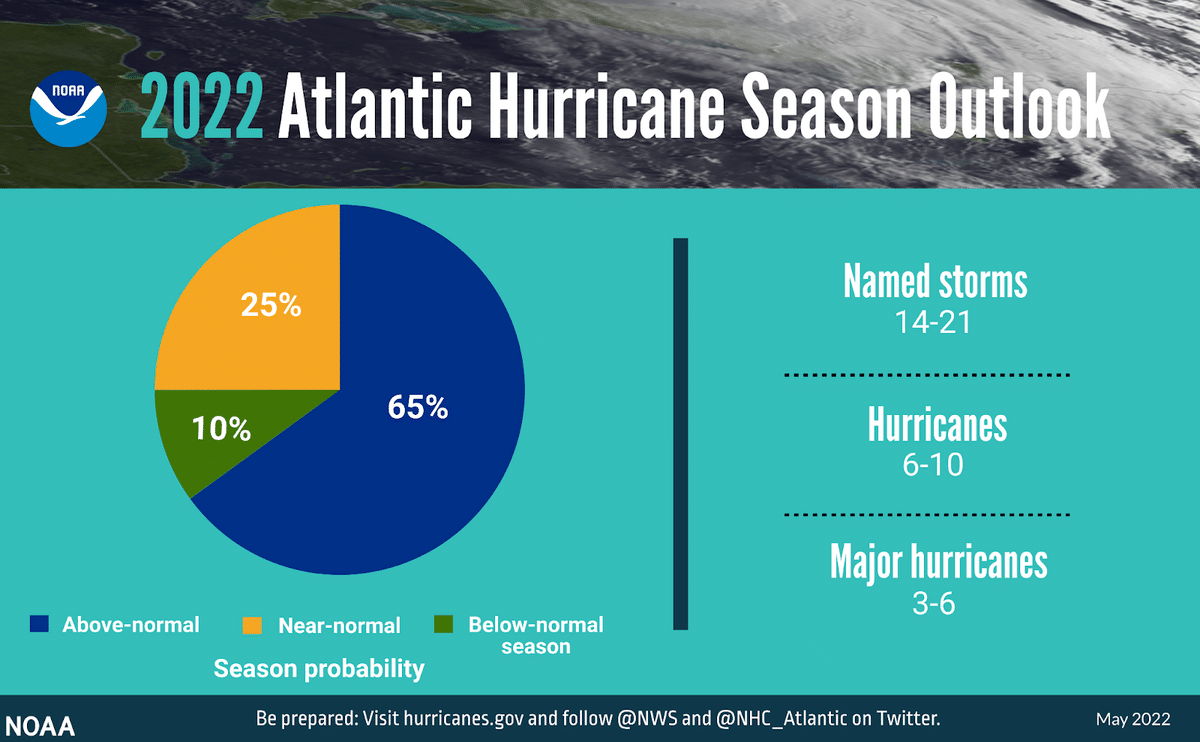
NOAA states the season will be full of named storms (winds of 39 mph or more), hurricanes (74 mph or more), and even major hurricanes (111 mph or more).
Therefore, if your construction sites are within the perimeter of these storms and hurricanes, you should prepare adequately, in order to avoid danger and keep your workers safe.
Now that you understand the seasonal weather conditions that might endanger your team, let’s see what you can do before they hit.
What to Do Before Severe Weather Happens
Once you know what kind of weather to expect in your area, take the proper precautions.
Firstly, get proper insurance. The majority of traditional insurance policies do not cover extreme weather damages.
However, if you get parametric weather insurance, you will get help with “losses from both more frequent and more severe adverse weather”, as they phrase it on WeatherBuild.
For example, you’ll be able to insure your cranes during hurricane season to cover potential losses.
When it comes to protecting people, quality training is essential. You should teach your workers how to protect themselves and recognize danger at the construction site.
A well-trained crew will be more organized and responsive, resulting in fewer losses.
Instruct the team on your emergency action plan. Your construction workers should know how to recognize the warning signs of different types of severe weather.
The team has to understand what steps to take in these circumstances.
You’ll also need personal protective equipment (PPE) to protect your construction team from severe weather.
The type of PPE depends on the situation at hand, but each hazard requires some form of equipment.
For example, when it gets freezing, your team should wear winter workwear, including warm jackets and balaclava, to protect their bodies from the cold.
Depending on your location, you’ll have to implement different systems to protect the site and people from injury.
For example, if you work in a windy area, you’ll inspect the site for potential airborne materials and brace all the elements on the worksite in advance.
Finally, if you want to stay safe, keep up with the weather forecasts, set weather alerts, and instruct your team to do the same. That way, you’ll be ready to act on time.
What to Do on a Jobsite During Severe Weather
When severe weather approaches, your team should be ready to act.
The easiest way to ensure everyone knows what to do is to use checklists for each type of severe weather.
My Loss Control Services offer excellent templates for water damage, wind, winter weather, and hurricanes.
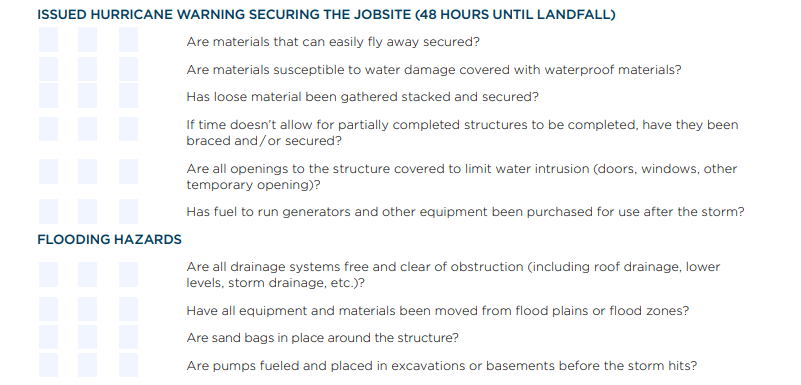
The templates cover every step of the process, including the things you must do shortly before severe weather, in this case, a hurricane. Make sure your checklist includes things like:
- Shutting off power, gas, and water
- Securing materials, tools, and equipment
- Covering holes and block drains
- Covering windows and glass with plywood
- Securing scaffolding to the structure
- Removing hazardous materials
A checklist will help you stay on track and not forget a single step. Each of the steps can be vital and, if skipped, have adverse consequences.
If danger is imminent, your team should give up on trying to recover tools and equipment from the construction site.
However, if you don’t want to lose valuable equipment and tools whenever such incidents happen, you should encourage your team to check each piece of equipment in as soon as possible after they’re done using it.
One construction worker shouldn’t have five different tools in the field if they can only use one at a time.
In case of a hazard, this worker would have difficulty recovering all these tools from the construction site.
So, the rest of the tools should be checked in with software like GoCodes. That way, you’ll minimize losses if extreme weather damages your construction site and tools.

If the danger isn’t imminent, your safety protocol should be to secure all heavy equipment and safely store tools. Employees should leave the scaffolds immediately to avoid any injuries.
On top of that, you should check drains for blockages to prevent potential flooding.
You must be prepared for every possible scenario and know the emergency protocols.
In the case of lightning, the National Oceanic and Atmospheric Administration (NOAA) recommends seeking shelter and staying indoors at least 30 minutes after hearing thunder since it is always caused by lightning.
Be aware of all such rules and include them in your checklists. That way, you’ll be sure you’re doing everything to keep your workers and materials safe.
How to Recover From Severe Weather
Recovering from severe weather includes inspecting the worksite, counting your losses, and ensuring it’s safe to continue working.
Once you are sure your construction team is unharmed after severe weather, you can go onto the construction site and inspect it.
No one should go back to work before you conduct a job hazard analysis.
The inspector should look around the job site and identify potential hazards. If severe weather damages your powerline, no one should go near it until the problem has been solved.

After all, the safe distance from a damaged powerline is at least 33 feet since electricity travels through the ground.
Sending your workers back to work without inspecting such power lines could turn deadly.
During the inspection, you’ll have to write down, take pictures, or record the damages so you can report them.
Proper insurance will cover these losses, easing your financial concerns. Don’t forget to check equipment and the structure during your construction site analysis.
Once you deem the construction site safe, it’s time to clean up.
Contact water or debris removal services, electricians, and any other professionals you need to clean up the area and allow your workers to continue working.
After you inspect the site, report the damage, and clean up, you can safely return to work.
Conclusion
Bad weather is no news in construction. While it damages some worksites, other companies prepare for this weather, keeping their workers and construction site safe.
Instead of counting on favorable weather, prepare for any weather-related issue that could strike in the given season, whether extreme heat or cold, rain, or snow.
After all, you can’t avoid severe weather conditions, but you can do your best to prepare for them.
That way, they will have less of an impact on our construction project’s safety, timeline, and cost.

